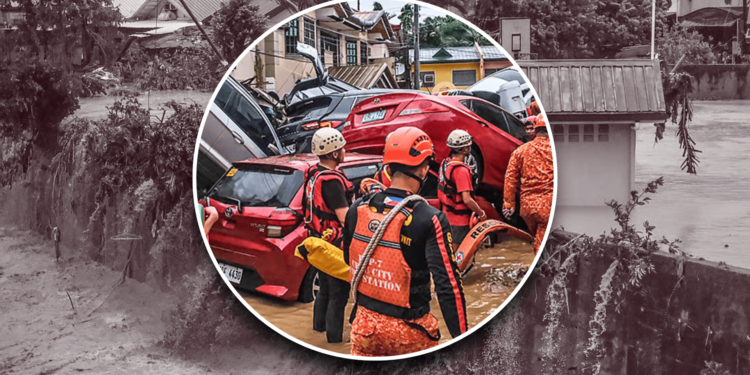At least 50 people have been confirmed dead and dozens remain missing after Typhoon Tino brought torrential rains and widespread flooding across Cebu, according to local disaster officials. The disaster has revived public attention to the government’s ongoing flood control projects, as recent audit reports from the Commission on Audit (COA) documented delays and incomplete works across Central Visayas.
The Cebu City Disaster Risk Reduction and Management Office-CCDRRMO reported nine fatalities within the city, including victims from Barangays Cogon Pardo, Sapangdaku, Talamban, Poblacion-Pardo, and Guadalupe. Multiple casualties were also recorded in Bacayan and Kalunasan. Additional deaths were reported in Mandaue, Compostela, Danao, and Talisay, while provincial authorities confirmed fatalities in several northern municipalities, bringing the overall death toll to at least 60.
Six crew members of a Philippine Air Force helicopter deployed for rescue operations also perished when their aircraft crashed near Agusan del Sur, the military said. The Office of Civil Defense and the national disaster agency reported that more than 400,000 people were displaced by the storm.
The Cebu Provincial Disaster Risk Reduction and Management Office (CPDRRMO) said that 32,603 families—over 102,000 individuals—were forced to evacuate across 33 local government units. DOST-PAGASA recorded rainfall reaching 183 millimeters in 24 hours, more than twice Cebu’s monthly average, triggering flash floods and landslides across the province.
According to the COA’s 2023 Annual Audit Report on the Department of Public Works and Highways (DPWH) Region VII, several flood control and drainage projects in Cebu were delayed, suspended, or left incomplete. The audit cited deficiencies in implementation, unutilized funds, and lack of coordination with local governments as contributing factors.
Among the cited projects were drainage and riverbank protection works along the Butuanon and Lahug Rivers, where COA noted delays and missing documentation for project extensions. Other audit findings referenced cost discrepancies and incomplete flood control structures in Mandaue and Talisay.
The DPWH has identified Cebu as a priority area for flood mitigation due to recurring urban flooding. However, COA observed that several ongoing and unfinished projects “failed to achieve their intended purpose” because of construction backlogs and weak monitoring mechanisms.
Cebu City was placed under a state of calamity, with ₱31 million in relief funds released as of November 5, according to local officials. Major roads remain impassable, bridges have sustained structural damage, and thousands of families remain in evacuation centers.
Local officials and civic groups have urged a review of delayed flood control projects following the disaster. Authorities have yet to establish any direct link between the project delays and the extent of flooding, but ongoing COA audits and DPWH reports have prompted calls for greater accountability in infrastructure spending.












